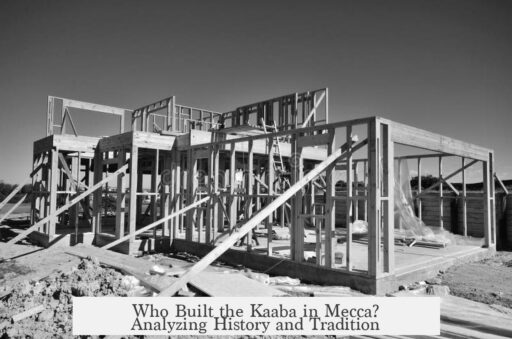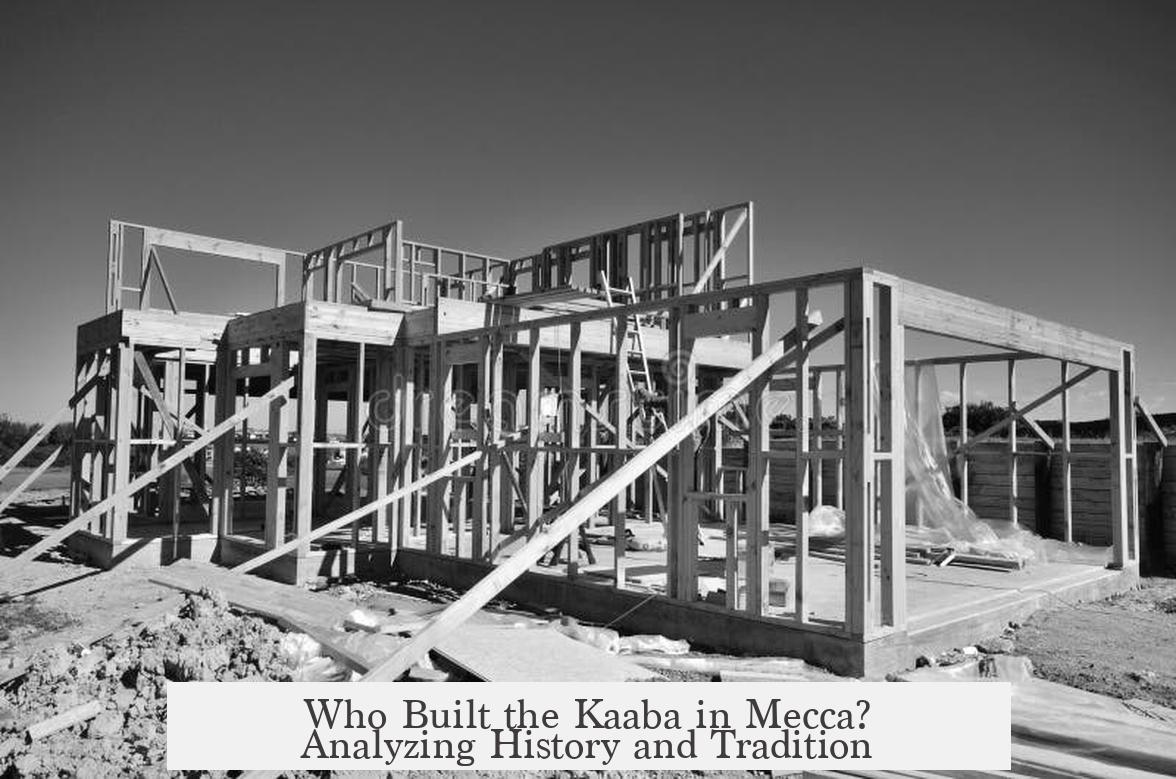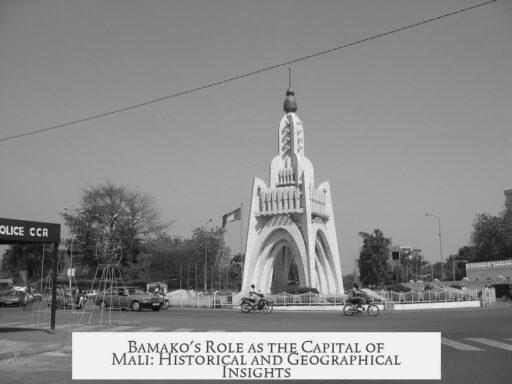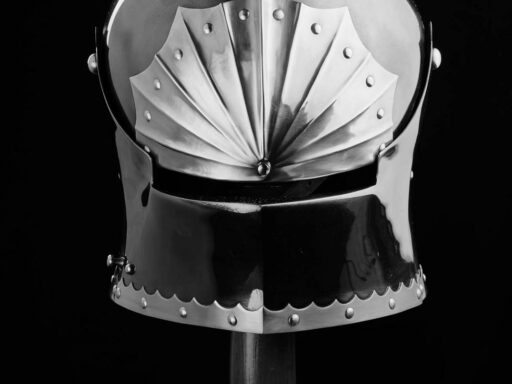The Kaaba in Mecca is traditionally believed to have been built by the Prophet Abraham, known as Ibrahim in Islamic teachings, along with his son Ishmael. This structure forms the center of the Islamic faith, serving as the qibla—the direction Muslims face during prayer—and the focal point of the annual Hajj pilgrimage.
Islamic tradition holds that Abraham and Ishmael constructed the Kaaba as a dedicated sacred site for the worship of the one God, Allah. This narrative is foundational within Islam, linking the Kaaba’s origin to the prophetic history common to Judaism, Christianity, and Islam. According to these traditions, Abraham traveled to Mecca with Hagar and Ishmael, where he established the Kaaba as a spiritual sanctuary dedicated to monotheism.
Before Islam, however, Mecca had long been considered a holy site by the local Arab tribes. The Kaaba itself had been transformed into a shrine housing numerous idols representing various Arabian deities. These idolatrous practices starkly contrasted with the monotheism that Abraham originally advocated. Despite this shift, the Kaaba retained its religious importance, functioning as a sanctuary—haram—where violence and feuds were forbidden, which contributed to Mecca’s status as a pilgrimage and trading hub.
Muhammad, the founder of Islam, played a decisive role in redefining the Kaaba’s purpose. After gaining control of Mecca in 630 CE, he cleared the Kaaba of idols, restoring it as a monument exclusively dedicated to Allah. This marked a crucial return to the monotheistic emphasis attributed to Abraham’s original construction. Since then, the Kaaba has been central to Islamic worship and the Hajj pilgrimage, which reenacts events related to Abraham and Muhammad.
The Kaaba’s physical structure, however, has undergone numerous repairs and reconstructions throughout history. It has endured damage from conflicts, including battles during the second Islamic Civil War, assaults by the Qarmatians in the 10th century, and renovations during the Ottoman era. Because of this, the current building is not the original construction by Abraham but a rebuilt and maintained structure reflecting centuries of continuous care.
There are alternative theories and speculations about the Kaaba’s origins. Some scholars suggest it might have originated as a site associated with the Zamzam well, which itself was considered sacred before the Kaaba’s rise as a religious center. Others propose astrological or cosmic symbolism linked to the Kaaba’s form and rituals, such as the circumambulation (tawaf) echoing celestial movements. A notable feature is the Black Stone set into the Kaaba’s corner, believed by some to be a meteorite, enhancing the site’s mystical significance.
Politically and economically, the Kaaba’s role as a religious center contributed to Mecca’s prosperity. By incorporating existing religious customs and pilgrimage practices into Islam, Muhammad ensured a smooth transition for the local population and the ruling elites. This helped secure peace within the city and maintained pilgrim flows, which supported the region’s economic stability.
| Aspect | Details |
|---|---|
| Traditional Builders | Prophet Abraham and Ishmael |
| Pre-Islamic Use | Polytheistic shrine with idols |
| Muhammad’s Action | Removed idols, dedicated Kaaba to Allah |
| Physical Changes | Multiple rebuilds due to damage and repairs |
| Alternative Theories | Connection to Zamzam well, astrological significance, meteorite stone |
| Political/Economic Role | Preserved pilgrimage, supported Mecca’s economy and social peace |
The Kaaba stands today as a symbol of Islamic faith and heritage, embodying layers of religious history and cultural significance. It reflects a blend of tradition, belief, and history shaped by religious narratives and pragmatic governance.
- Islamic tradition credits Abraham and Ishmael with originally building the Kaaba.
- The site was used for polytheistic worship before Islam.
- Muhammad purified the Kaaba, removing idols and restoring monotheistic worship.
- Repeated damage and rebuilding mean the physical structure is not the original.
- The Kaaba may have pre-Islamic religious and astrological origins.
- Its position helped Mecca’s social and economic stability historically.
Who Really Built the Kaaba in Mecca? A Deep Dive Into History, Faith, and Mystique
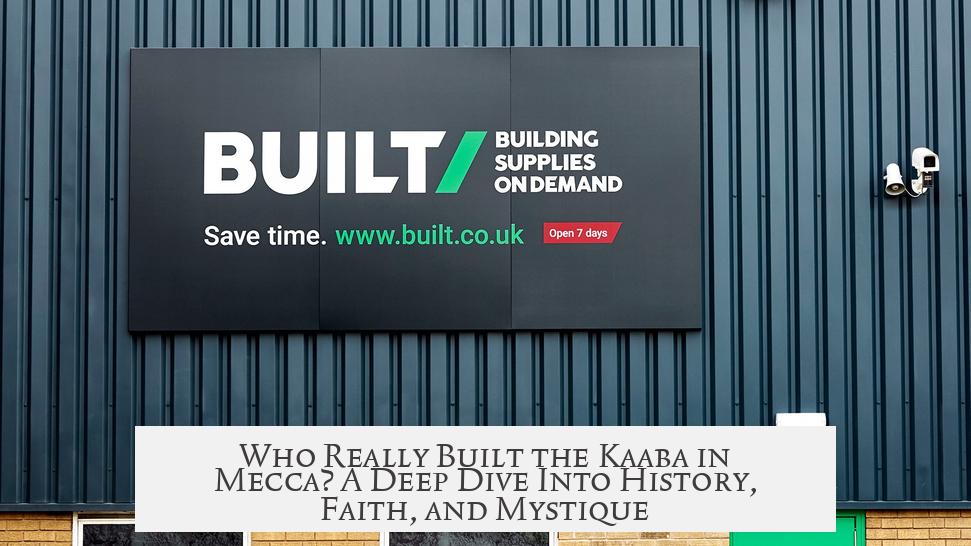
The Kaaba in Mecca is traditionally believed to have been built by the Prophet Abraham, making it a profoundly ancient and sacred site for Muslims worldwide. But who exactly built this iconic cubic structure? Is it really as simple as that? Hold on tight, because this story is as layered as the kiswa that cloaks the Kaaba itself.
The Abrahamic Roots: Tradition Meets Faith
Islamic tradition clearly states that Prophet Abraham constructed the Kaaba after traveling to Mecca to settle with his wife Hagar and son Ishmael. This isn’t just a random story told around campfires; it’s a cornerstone of Islamic belief deeply intertwined with the pilgrimage rites of Hajj.
The pilgrimage itself is more than just a walk around a building. It’s a vivid reenactment of Abraham’s and Ishmael’s devotion, coupled with the guidance delivered centuries later by the Prophet Muhammad. Abraham’s involvement is so central that many Muslims see the Kaaba as a beacon of monotheism dating back thousands of years—long before Muhammad’s time.
Interestingly, some narratives even suggest that the Kaaba could have connections to earlier prophets, implying this site has been significant for many generations—like a spiritual family heirloom.
Pre-Islamic Mecca: A Shrine with Many Faces
Before Islam, Mecca was no stranger to religious significance. In fact, it was a respected sanctuary—known as haram—where violence was forbidden and trade thrived. But here’s the twist: the Arabs had, over time, corrupted their original faith and become polytheists.
The Kaaba was not always the monotheistic monument it is now. At one point, it was a shrine housing idols of various Arabian gods. Idol worshippipers used the Kaaba to store their statues and artifacts, making it a bustling religious center for the local tribes. This explains the region’s prosperity—pilgrimage and trade went hand in hand, filling coffers while people sought divine favor.
So, the building Abraham constructed, as per tradition, had morphed into a multi-god sanctuary, and the pure original faith was sadly lost—until Muhammad’s time.
Muhammad’s Role: Restoring the Kaaba’s Monotheistic Focus
When Muhammad gained control of Mecca, it was a game-changer. He didn’t just take over; he cleared out the idols from the Kaaba, purifying it for worship of Allah alone.
This act wasn’t merely religious but deeply political. Not only did it conclude idolatry at the site, but it also reaffirmed the Kaaba as the center for Muslim pilgrimage. Since then, the Hajj evolved around this purified shrine, solidifying religious unity among the newly formed Muslim community.
Imagine the square transformed: from a cluttered shrine with countless idols to a singular, powerful symbol of monotheism. That’s Muhammad’s impact right there, enshrined in every circumambulation (tawaf) pilgrims make today.
The Kaaba’s Physical Journey: More Than Just One Building
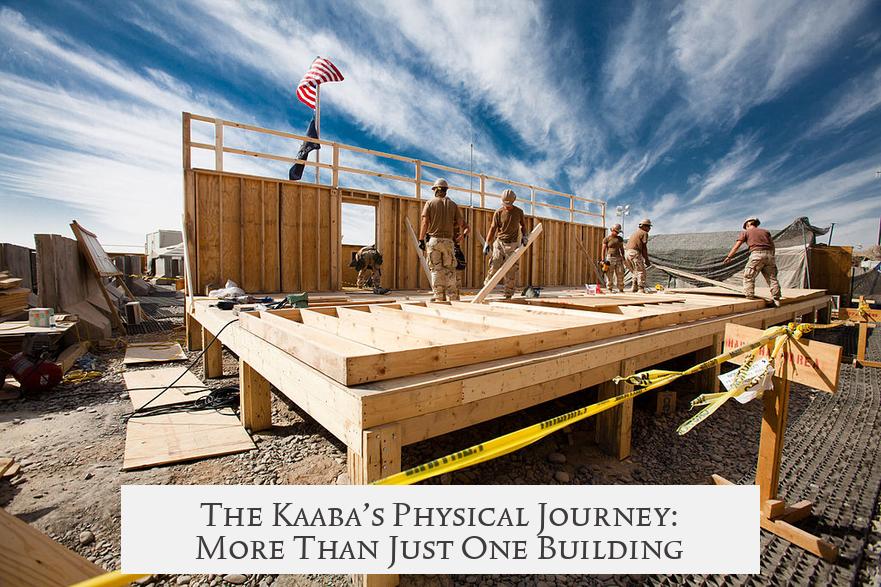
Hold onto your keffiyehs—the Kaaba we see today isn’t exactly the original structure built by Abraham, or even the one Muhammad purified.
Historical records are vague about the original construction’s exact details, but we do know the Kaaba has been damaged, repaired, and rebuilt many times. Battles and raids have left their mark.
- The Second Islamic Civil War saw intense conflict that either severely damaged or completely rebuilt the Kaaba. There’s some debate about the extent of destruction here.
- In the 10th century, the Qarmatians even stole the famed Black Stone, a meteorite revered as an Islamic relic. They returned it later, but the incident remains legendary.
- In the Ottoman period, restorations addressed accumulated damage and wear.
Today, most people know the Kaaba by its stunning kiswa, an ornate black cloth draping the building annually replaced. But beneath this beautiful veil? The structure is simple, sturdy, and rather plain.
What if the Kaaba Wasn’t Just Abraham’s Build? Alternative Insights
Here’s where history gets mysterious. Nobody truly knows who built the Kaaba long before Islamic records began—it’s wrapped in the fog of antiquity and faith.
- One theory points to the well of Zamzam, a holy site predating the Kaaba. Perhaps the Kaaba originally stored relics used in Zamzam rituals, slowly gaining importance over time.
- Another idea compares the Kaaba’s rituals and shape to astrological phenomena—the way ancient monuments like Egypt’s pyramids align with stars.
- The Black Stone inside, arguably a meteorite, adds a cosmic dimension. Imagine ancient people discovering a stone fallen from the sky and deeming it a divine gift. That could explain part of the sacred aura surrounding the Kaaba.
- It’s also suggested that the Muslim pilgrimage’s circular movement mimics celestial motion, grounding the ritual in the heavens.
Such theories don’t contradict Islamic tradition but enrich our understanding, offering fascinating perspectives on how human culture intertwines with the divine.
Politics, Economy, and Religious Evolution: The Bigger Picture
Muhammad’s adoption of the Kaaba and related rituals had practical impacts too. Mecca wasn’t just holy; it was a thriving commercial hub.
Imagine this: religious ceremonies attracted pilgrims, which fueled an active local economy. Combat and conflict were taboo within Mecca’s haram sanctuary, making it a safe and prosperous city.
By incorporating traditional rituals and the pre-established sacred site of the Kaaba into Islam, Muhammad created a comfortable transition for locals. This wasn’t accidental—it was a savvy move that helped preserve the influence of local elites and allowed economic activities tied to pilgrimage to continue.
So, in a clever balancing act, Islam maintained Mecca’s religious and economic sanctity while reforming its spiritual core.
What We Can Learn and Reflect On
Who really built the Kaaba? Based on tradition, the answer points to Abraham, whose legacy gives the Kaaba its foundational holiness.
But history and archaeology reveal it’s more than a single origin story. The Kaaba’s physical form changed, its purpose evolved from polytheistic shrine to monotheistic heart, and its significance grew with the cultural and political tides.
This journey reminds us how sacred places often bear layered histories—where faith, politics, culture, and nature collide.
Next time you think about the Kaaba, imagine standing at a crossroads of human history, theology, and starry wonder. Isn’t it fascinating how one building ties centuries of human stories together, from a meteorite in the sky to pilgrims circling in devotion today?
Final Thoughts: The Kaaba as a Living Symbol
The Kaaba’s enduring mystery isn’t a flaw but its strength. A holy building never truly fixed in time, it grows in meaning for each generation of Muslims. Its roots in Abraham’s time, its stewardship by Muhammad, and its role today connect millions in a shared spiritual journey.
Whatever your beliefs, the Kaaba stands as a remarkable testament to human devotion, adaptation, and the search for the divine. So next time you spot a photo of the Kaaba wrapped in its black kiswa, remember: beneath that cloth lies a story centuries old—and still unfolding.
Who is traditionally credited with building the Kaaba?
Islamic tradition states that the Prophet Abraham built the Kaaba as a holy site. He is said to have settled in Mecca with Hagar and Ishmael and constructed it thousands of years before Muhammad’s time.
Was the Kaaba important before Islam?
Yes. The Kaaba was a sacred site in pre-Islamic Arabia. Arabs worshipped many gods there, turning it into a shrine for idols before Muhammad restored it as a monotheistic place of worship.
What role did Prophet Muhammad play concerning the Kaaba?
After gaining control of Mecca, Muhammad removed idols from the Kaaba. He reinstated it as a center of worship dedicated solely to Allah, shaping it as the focus of Islamic pilgrimage.
Has the Kaaba always looked the same since it was built?
No. The Kaaba has been damaged, repaired, and rebuilt many times due to wars and raids. Its current appearance is influenced by ongoing maintenance and the covering called the kiswa.
Are there alternative views about the Kaaba’s origin?
Some theories suggest the Kaaba began as a site connected to the Zamzam well or had astrological significance. The black stone inside is thought to be a meteorite, possibly the reason for the site’s early sacred status.
